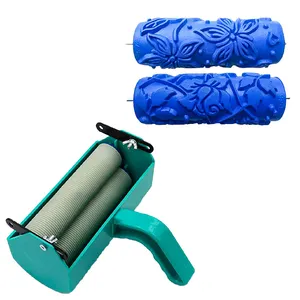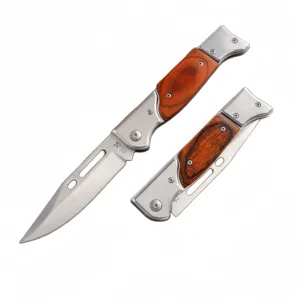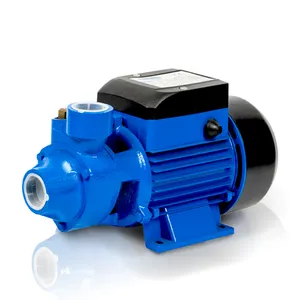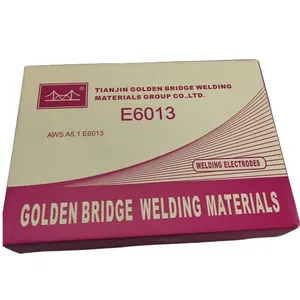Popular in your industry











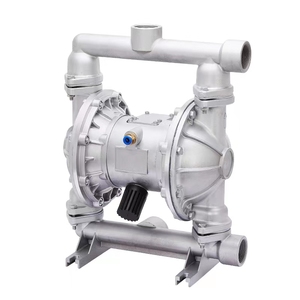










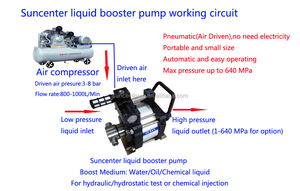










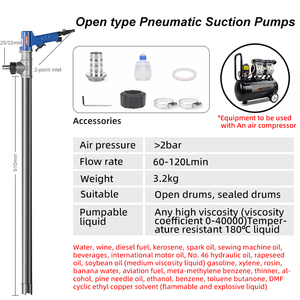

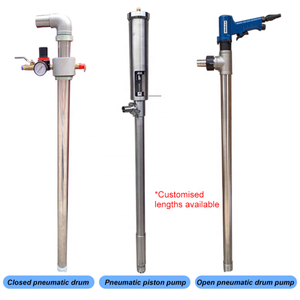






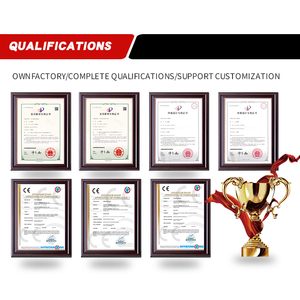


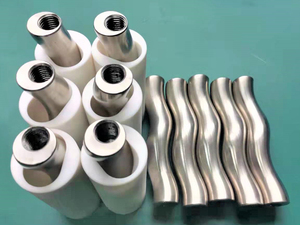














Top categories
About pump for barrel
Introduction
In the world of industrial operations, the efficiency of a pump can significantly impact the overall productivity and cost-effectiveness of the process. This article delves into the intricacies of pump efficiency, with a particular focus on barrel pumps. We explore the factors that influence pump efficiency, the importance of choosing the right pump for barrels, and the different types of pumps available. We also discuss the various considerations to keep in mind when selecting a pump, including capacity, material compatibility, energy efficiency, and maintenance. Finally, we examine how to maximize efficiency with the right pump, touching on aspects such as proper installation, regular maintenance, and performance optimization.
Understanding Pump Efficiency
Pump efficiency is a critical aspect of pump operation. It's influenced by factors such as the type of liquid being pumped and its viscosity. For instance, when pumping liquids with a viscosity higher than water, pump performance must be corrected as efficiency decreases and more horsepower is required. This can lead to larger motor requirements and potential limitations in the pump power frame. Understanding these factors and making necessary adjustments can help maintain optimal pump efficiency, especially when dealing with different liquids and conditions.
The Importance of Choosing the Right Pump for Barrels
Choosing the right barrel pump is crucial for optimal results in your operations. These pumps are used in diverse industries, to pump everything from corrosive acids to honey or hair gel. The selection depends on several factors including the head and flow, the chemicals involved, temperature, viscosity, specific gravity, container size, desired motor type, and pump size/portability. Each of these variables affects a pump’s performance and requirements, making it essential to select the best barrel pump specifications for the job.
Types of Pumps for Barrels
There are two major types of drum pumps: hand-operated drum pumps and electric-operated drum pumps. Hand-operated drum pumps are powered by hand, ideal for remote pumping applications and in instances where there’s little to no power available. Electric-operated drum pumps run on electricity, suitable for tasks that involve a higher volume transfer. Both types are available in different tube lengths, materials, and models, catering to various industrial needs.
Centrifugal Pumps
Centrifugal pumps are a common type of pump used in various industries. They can approach 94 percent efficiency, but typical efficiencies are 55 percent for small pumps and 70 percent for large pumps. The efficiency of a centrifugal pump is determined by factors such as mechanical efficiency, volumetric efficiency, and hydraulic efficiency. Mechanical efficiency factors include frictional losses from bearings, packing, and seals. Volumetric efficiency is affected by losses from leakage across wear rings and impeller clearance. Hydraulic efficiency factors are the largest hindrance, including fluid friction losses in the pump. Despite these challenges, with proper design and operation, centrifugal pumps can be a highly efficient choice for barrel applications.
Positive Displacement Pumps
Positive displacement drum pumps are a versatile solution for various industrial and sanitary applications. They are designed to handle a wide range of fluids, including water treatment chemicals, acids and alkalis, explosive liquids, oils and lubricants, and high viscous fluids. These pumps are available in manual or motorized configurations, offering flexibility based on your specific needs. Trusted manufacturers provide a comprehensive selection of these pumps, ensuring there's a pump suitable for any chemical or solution in the drum.
Submersible Pumps
Submersible pumps for barrels are another excellent option. These pump-driven systems often include a submersible pump with flow control, garden hose connections, and hose clamps. They eliminate the need to elevate your rain barrel or install a stand, allowing direct watering of your garden from up to 2 rain barrels. The barrels are bottom-connected to ensure consistent water levels.
Factors to Consider When Choosing a Pump for Barrels
When choosing a pump for barrels, several factors should be considered. These include the head and flow, which are determined by the speed, distance, and configuration needs of your application. The type of chemicals involved, their temperature, and viscosity also play a role. The specific gravity of the fluid, the size of the container, and the desired motor type are other important considerations. Lastly, the pump size and its portability should be taken into account, especially if you plan to use the pump in multiple areas or have limited space.
Pump Capacity
Pump capacity is a crucial factor when choosing a pump for barrels. It describes the rate at which a pump can push fluid through its system, expressed as fluid volume per unit of time. The flow, or pump capacity, is usually represented by the letter Q. Pump capacity can also be expressed as the mass of a fluid that passes through a pump over a given time, known as the mass flow rate. To calculate your pump capacity accurately, you need to understand some key data points and terminology. The higher the pump capacity, the higher the volume of fluid your pump can move.
Material Compatibility
Material compatibility is a crucial factor in pump selection. The materials used in the pump and pumping systems must be chemically compatible with the fluid being pumped. The compatibility data provided is usually at standard room temperature (70ºF or 21ºC). If your operating temperature differs, it may affect the compatibility by accelerating the reaction. If unsure of the compatibility of your chemical, it's recommended to test a sample of the material with the chemical.
Energy Efficiency
Energy efficiency is crucial when choosing a pump for barrels. Oversizing the pump can lead to unnecessary energy consumption, so it's best to select a pump that operates close to its Best Efficiency Point. Variable frequency drives can limit energy consumption by adjusting the motor's rotational speed to meet the application's demand. Parallel pumping systems and optimizing pipework to limit pressure loss can also enhance energy efficiency. Regular maintenance is vital as wear can reduce a pump's efficiency. Ultimately, the right pump choice, proper installation, and regular maintenance can significantly reduce energy costs.
Maintenance and Lifespan
Maintenance and lifespan are crucial aspects of a pump for barrels. Regular preventative maintenance can extend the life of your pump by 50% or more, preventing premature wear and costly repairs. Key maintenance procedures include checking for fluid leaks, adjusting packing, ensuring proper oil level, and inspecting the pump pressure and flow. Regularly inspecting the temperature, cleaning motor vents, and checking the condition of the pump casing are also essential. A well-maintained pump can last 30 years or more, ensuring optimal performance and efficiency.
Maximizing Efficiency with the Right Pump
Maximizing efficiency with the right pump for barrels is highly dependent on understanding pump rotodynamics. Pump performance, efficiency, and reliability are greatly influenced by the system they supply. Component failures often stem from system problems, design, specifications, installation, and operation. Operators need to recognize the symptoms when the system operates away from the best efficiency point (BEP). Efficiency and reliability go hand in hand, so a systems approach is crucial when evaluating repair and maintenance options. Remember, the right pump for your barrel can significantly improve your system's overall efficiency and reliability.
Proper Installation and Operation
Proper installation and operation of a pump are crucial for its efficiency and longevity. The process begins with a solid foundation, ensuring the base is flat and level. The pump and driver are then installed on the baseplate, followed by lubrication and an initial alignment check. Grouting the base and installing the piping are also essential steps. The alignment should be checked again after these steps. It's important to verify the rotation direction and check the pump settings. Ancillary equipment is installed next, followed by the coupling. Before startup, a pre-startup check is conducted, and the pump is filled and vented. Regular checks for proper pressures, flows, temperature of oil and bearings, vibrations, and noise are necessary after startup.
Regular Maintenance and Inspection
Regular maintenance and inspection are crucial for the longevity and efficiency of pumps for barrels. This involves proactive measures such as regular checks, cleaning, and replacing worn-out parts. Preventive maintenance, predictive maintenance, and condition-based monitoring are common approaches. Each approach has its benefits and costs, but all aim to optimize pump performance and prevent breakdowns. It's advisable to consult the pump manufacturer for a specific maintenance schedule, as it can vary based on the pump's design and application.
Optimizing Pump Performance
Optimizing pump performance is crucial for maximizing efficiency. Systems optimization involves evaluating pumping systems to identify improvements that reduce energy consumption and enhance reliability. It's not enough to improve a single component, such as installing a more efficient motor. Instead, engineers must evaluate how all pump components work together and determine how to make certain system changes to improve net efficiency. Greater pump system efficiency will improve reliability and lower operating costs by reducing wear and tear, decreasing downtime and costs associated with lost production, maintenance, and repairs, while extending equipment life.
Conclusion
In conclusion, the efficiency of a pump for barrels is a multifaceted concept, influenced by a myriad of factors. From the type of pump and its specifications to the nature of the liquid being pumped, every aspect plays a crucial role in determining the overall efficiency. The right pump selection, coupled with proper installation and regular maintenance, can significantly enhance the system's efficiency and reliability. Moreover, optimizing pump performance by evaluating the entire system holistically can lead to substantial energy savings and improved reliability. Thus, understanding these factors and making informed decisions can significantly impact the success of your industrial operations.


